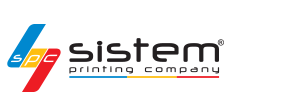What is lacquer?
The importance of addressing the visual quality and appeal the eye in printer in increasing more and more and also lacquer printing, which is characterized in offset printing as art of trimming, becomes every passing day more popular. And both for trimming of the offset printed materials and in order to protect or ensure a longer durability against abrasion, lacquer printing is required. Lacquer printing is applied for trimming after offset printing and for protection purposes.
Lacquer is one of the processes applied post-printing. It is a frequently preferred method because it ensures brightness and durability. It adds a visual value to printed products since it gives more brightness compared to the varnish application.
The lacquer applied on the printing surface ensures that the product looks brighter and more remarkable. Additionally it ensures an extra durability against external factors i.e. dust, water and bending.
What is the benefit of lacquer application?
It is an application performed in order to gain the design an esthetical appearance and provide protection. Two types of this method, which is used at the place of the design intended to draw attention or is used in order to support the design, are available in our system.
Lacquer applied paper surface is quite resistant against scratching, moisture, sunlight and diffusion of the printing on the paper. Lacquer provides the shiniest appearance compared to other coating methods. The cracking potential in the paper, during folding, pleating and cutting processes after printing, increase as much as the paper thickness increases.
Offset printing lacquers are suitable to be used for special designs and printing processes. It is possible to apply lacquer printing on a material with a weight of 80-90 g/m2. This application is not preferred fro products, which are not frequently used, because this application will create an additional cost. Further, UV (ultraviolet) lacquer, which is a preferred similar application, is more expensive compared to dispersion lacquer.
Lacquer Sorts
It can be obtained by means of bright cellophane applied once on the defined design area. It gains brightness to the surface. It is not applied to the entire product, but on the desired part. This applications is usually preferred by our customers, who intend to draw attention to their logo, contact details or slogans.
It is obtained by applying the bright cellophane twice on the defined design area. It has a more distinctive structure than the partial lacquer. The embossed lacquer application, which is preferred particularly on invitations and special day publications, adds a dressier appearance to the print product.
It is applied on certain parts of the work to be printed. “Sanding effect” provides as more successful result on matt cellophane.

